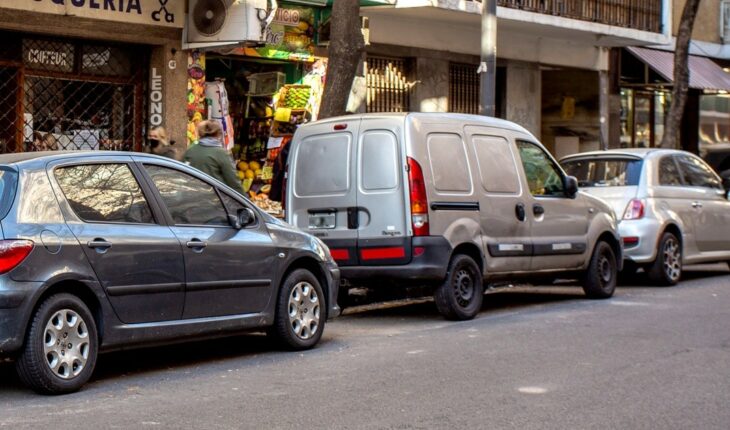Parking in the City of Buenos Aires is usually somewhat complicated, especially in some neighborhoods, where you have to take several turns to find a place to leave the car. Therefore, the Buenos Aires Legislature will vote next week on a bill that, among other things, will allow drivers to park on both sides of common streets, unless a sign prohibits it. The initiative of the Buenos Aires administration was worked on in the Transit and Transportation Commission of the Legislature and will be discussed on Thursday of next week. The ruling party would have the necessary votes to approve the measure. However, given the modification that will have to be made to signal the new rules, it will enter into force at the end of 2022.56% of the infractions made in 2022 are related to bad parking. The new rules foreseen in the project
You can park on both sides, except in the streets where it is expressly indicated that it is allowed.
It will be forbidden to park in both hands on avenues between 7 and 21, unless the signage indicates otherwise.
It will be forbidden to park in passages, streets with bicycle paths and avenues with Metrobus.
Currently, it is forbidden to park:
In those marked places, as determined by legal norm the City Government.
In exclusive areas of public transport and mass passengers. In no case can the arrest be made in the sectors of collective transport stop of passengers and taxis, in front of police stations, fire departments and banks.
On yellow line cord, ochavas and on corner ramp.
In the passages, in all its extension, next to both sidewalks.
Less than fifty (50) meters on each side of the level railway crossings.
In the sectors of entry and exit of vehicles to public roads. This prohibition will even reach parking in the section of the opposite sidewalk, in front of them, when the width of the road is insufficient for the maneuvers of entry and exit of vehicles. If parking is allowed next to the sidewalk where the vehicle entrance is located and also the width of the road is insufficient to maneuver, the general prohibition is extended one meter on each side of the width of the entrance.
In front of the entrances of public performance venues, at the times in which functions are performed in them.
In front of the entrance of the buildings where Police Stations and Fire Departments work. This prohibition will even extend to parking on the opposite sidewalk, in front of them, when the width of the road is insufficient for the maneuvers of the vehicles affected by the service.
In front of the fords or ramps for the crossing of people by the pedestrian path.
About the bike paths.
In front of the entire property where there are wake rooms enabled according to current regulations, between 8 and 22 h. In no case will such prohibition exceed the limits of the aforementioned land and may not exceed fifteen (15) meters even if it has a greater length.
In front of the entrance mouths of the underground.
Less than ten (10) meters on each side of:
The entry of hospitals, sanatoriums, clinics and centers that provide health services.
The entrance of schools, colleges and faculties in class hours.
The entrance of the temples at times when services or ceremonies are held.
The main entrance of hotels with permission to use granted that have thirty (30) or more rooms and do not provide hostel service by the hour.
The entry of banking institutions during the hours of attention to the public.
The entry of branches of mail companies, during their operating hours.
The entrance belonging to headquarters of legally constituted institutions of people with special needs.
The connections for water supply by tanker trucks that are in front of the hospitals, which must be clearly demarcated.
Next to the corresponding sidewalks of the sections of arteries where there are exclusive lanes for some type of vehicle, in the hours of operation of the same.
The fine for parking or stopping in prohibited areas is $5,300, and that amount rises to $10,500 if you park in places reserved for emergency services, public transportation stops, vehicle entrances, bike paths, exclusive lanes, Metrobus corridors and Macro and Microcentro areas. In addition, about $17,674 must be paid if ramps or spaces for people with disabilities are obstructed.





